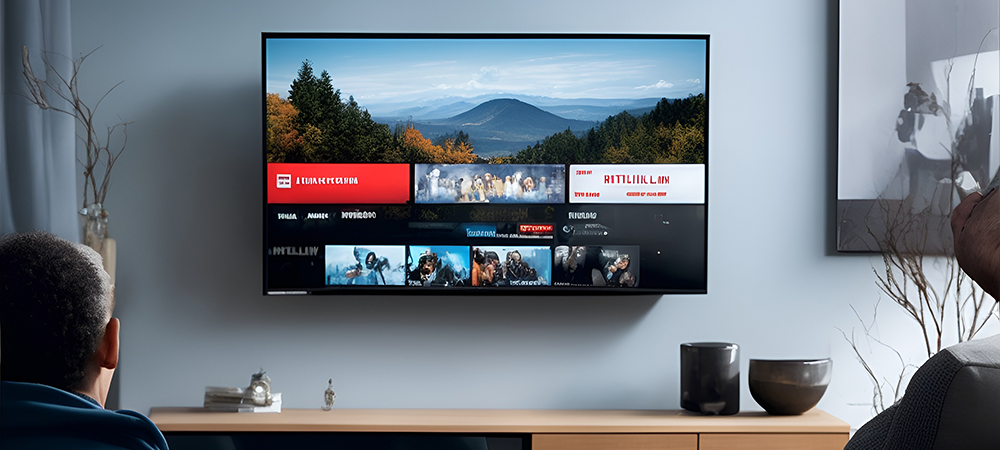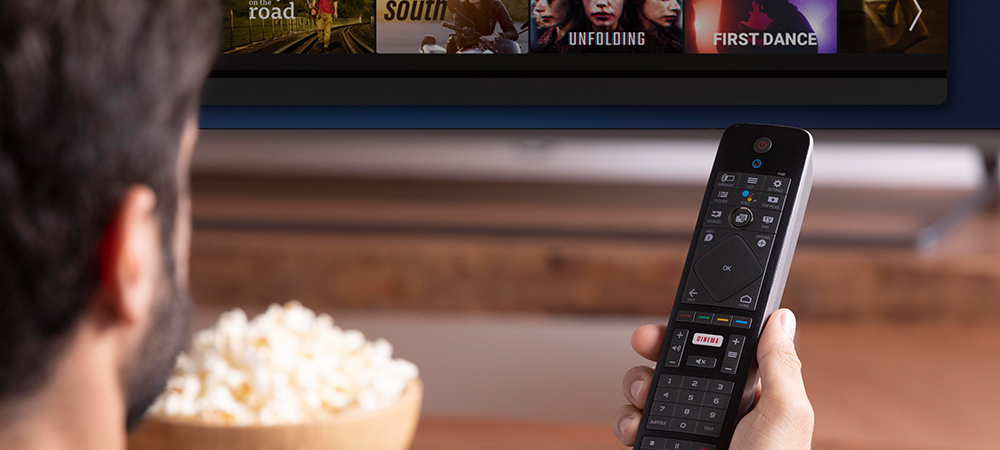Demand Side Platforms (DSPs) play a crucial role in digital advertising and Connected TV advertising. Here are some statistics related to DSPs and Connected TV advertising in 2023:
| Statistics |
|---|
| A DSP is a programmatic tool used for running, managing, and optimizing ad campaigns.1 |
| Global digital ad spending is set to increase by 10.5% year over year in 2023 and reach $696 billion.2 |
| DSPs are typically managed by in-house marketing teams, advertising agencies, or agency trading desks that specialize in real-time advertising.3 |
| SSPs and DSPs capable of securely processing bid requests with first-party data will emerge triumphant and command a more significant market share in 2023.4 |
Evolving Landscape of Digital Advertising
Hello there! If you’ve landed on this article, chances are you’re interested in the fast-paced, ever-changing world of digital advertising. You’re in the right place!
In the last two decades, advertising was a matter of billboards, TV commercials, and newspaper ads. Fast forward to today, and we’re navigating an entirely different beast. Digital advertising has exploded onto the scene, transforming how brands reach out to potential customers. With technology propelling us forward at breakneck speed, the landscape of advertising is continually evolving.
Now, we’re seeing ads in more places than ever before – while scrolling through social media, streaming a favorite show, or even playing a mobile game. The line between the digital world and the physical world is blurring, creating a myriad of new opportunities for advertisers.
DSPs, Programmatic Buying, and CTV Advertising
Let’s be honest, the world of digital advertising can seem a bit daunting, right? With all the buzzwords and acronyms flying around – DSPs, RTB, OTT, CTV – it’s easy to feel overwhelmed. But fear not, that’s exactly why we’re here!
We’re going to delve into some key concepts that are driving modern advertising. We’ll explore what Demand Side Platforms (DSPs) are and why they’re game-changers in the advertising industry. We’ll uncover the mystery behind programmatic buying, and how it’s revolutionizing the way ads are bought and sold.
Lastly, we’ll dive into the world of Connected TV (CTV) advertising. As more and more people cut the cord and shift from linear towards streaming platforms, we’ll examine how advertising is keeping up with this change.
Demand Side Platforms (DSPs): The Backbone of Digital Advertising
Significance of Demand Side Platforms (DSPs)
As we venture into the heart of digital advertising, the first stop on our journey is the world of Demand Side Platforms, more commonly known as DSPs. But what exactly is a DSP, you might ask? Great question!
A DSP is a software system that allows advertisers to manage multiple ad and data exchanges through one interface. Think of it as your one-stop-shop for buying ad space across the digital landscape. The “demand” in Demand Side Platform refers to advertisers (like you!) who demand, or wish to purchase, digital ad space.
But why are DSPs such a big deal in digital advertising? Imagine trying to buy ad space on each website, app, or streaming device individually – it would be a challenging task. With a DSP, you can automate this process, saving you time and resources. It’s like having a personal assistant who takes care of all your ad buying needs (programmatically through an ad buying and ad serving process)!
Functionality and Benefits of a DSP
Now that we’ve covered what a DSP is, let’s dig a little deeper into how it works and the benefits it brings to the table.
At its core, a DSP streamlines the ad buying process by allowing you to set your budget, choose your target audience, and then let the platform do the heavy lifting. This automated bidding for ad space happens in real-time, a process known as Real-Time Bidding (RTB). Talk about efficiency!
But the benefits of a DSP go beyond automation and simplification. One of the most significant advantages is the ability to target your ads effectively. Through a DSP, you can access rich data that helps you reach your ideal audience with precision. Whether you want to target pet owners in a specific city or millennials with a love for travel, using a DSP can make it happen through advanced targeting options.
DSPs also provide detailed analytics and reporting, giving you a clear picture of how your ads are performing. This data-driven insight allows you to adjust your campaigns and optimize your strategy, ensuring that your advertising dollars are well spent.
In short, a DSP is not just a tool but a powerful ally in the world of digital advertising. It gives you the keys to unlock an efficient, effective, and data-driven advertising strategy. And in today’s competitive landscape, who wouldn’t want that?
Programmatic Buying and Ad Serving: The Role of Digital Marketing Agencies
Introduction to Programmatic Buying and Ad Serving
Let’s move on to another concept that has been a game-changer in the advertising industry – programmatic buying. It might sound like marketing and advertising jargon, but trust me, it’s simpler than you might think!
Programmatic buying is essentially using technology (like our friend, the DSP) to automate the process of buying and selling ad space. Instead of traditional manual negotiations, transactions are done in milliseconds through complex algorithms. It’s like trading stocks online, but for advertising space.
Now, let’s turn our attention to ad serving. Ad serving is the technology and service that places advertisements on websites, in apps, and even in Connected TV platforms. It involves deciding what ads to show, to whom, and when, making sure your ad reaches the right audience at the right time.
How Agencies Can Assist in Managing DSPs and Programmatic Buying
If you’re feeling a little overwhelmed by all this, that’s where digital marketing agencies come into the picture. These agencies are like your experienced tour guides through the complex terrain of programmatic buying and ad serving.
Agencies can help manage your DSPs, programmatic buying, and ad serving needs, acting as the bridge between your brand and the advanced technologies used in digital advertising. They use their expertise to create effective campaigns, optimize bids, and analyze data, leaving you more time to focus on other aspects of your business.
The Advantages of Using an Agency with an Amazon DSP Seat
Now, you might be wondering, “What’s the deal with Amazon DSP and why should I care if an agency has an Amazon DSP seat?” It’s a pretty big deal!
Amazon is not just an e-commerce giant, but also a treasure trove of consumer data. Agencies with an Amazon DSP seat have access to this data, providing them with unique insights into customer behavior and preferences. This translates into more effective advertising campaigns, advanced targeting, and lower CPMs.
Working with an agency that has an Amazon DSP seat is like having a backstage pass to the most exclusive concert in town. It provides access to valuable resources that can take your advertising strategy to the next level.
Embracing the Future with Connected TV (CTV) Advertising
What is CTV Advertising?
Next on our digital advertising journey, let’s dive into the exciting world of Connected TV, or as the cool kids call it, CTV. Picture this – you’re lounging on your couch, streaming your favorite show on a platform like Netflix or Hulu, and an ad pops up that feels like it was made just for you. That’s CTV advertising in action!
In technical terms, CTV refers to any TV that can be connected to the internet and can stream digital video, be it a smart TV, a gaming console, or devices like Roku or Amazon Fire Stick. CTV advertising is simply serving ads on these platforms. As more and more viewers cut the cord and move away from traditional cable, CTV advertising is quickly becoming the new frontier for advertisers.
Benefits of CTV Advertising Including Direct Access Inventory and Advanced Targeting
So, why is CTV advertising creating such a buzz? Well, aside from being where the viewers are, it offers a couple of distinct advantages that make advertisers’ hearts skip a beat!
First up, direct access inventory. In the world of CTV, direct access inventory refers to ad slots that are available for purchase directly from the publisher. This direct relationship often results in greater transparency and control over where your ads are being placed. It’s like having VIP access to the best spots!
Then comes the beauty of advanced targeting. Remember how we talked about DSPs providing access to rich data for targeting? With CTV, this goes a step further. CTV platforms have a wealth of data about viewer preferences, habits, and demographics. This allows advertisers to target their ads with an unprecedented level of precision to ensure your ad reaches the right people at the right time!
Common Questions about CTV Advertising
Addressing Common Questions and Misconceptions about CTV Advertising
As with any new and rapidly evolving field, CTV advertising can raise more than a few eyebrows, leading to a handful of questions and even some misconceptions. Don’t fret, though, that’s what we’re here for!
One common question is, “Isn’t CTV advertising just like traditional TV advertising?” While it’s easy to see why one might think that – after all, both involve ads on a TV screen – the reality is quite different. CTV advertising leverages the power of digital technology, allowing for that laser-focused targeting we talked about earlier. Traditional TV advertising, on the other hand, casts a much wider and less specific net.
Another misconception is that CTV advertising is expensive. While it’s true that CTV ad rates can be higher than some digital alternatives, the advanced targeting capabilities often result in a better return on investment. In short, it’s a classic case of quality over quantity.
How to Measure the Success of a CTV Campaign
Now that we’ve cleared the air on some misconceptions, let’s tackle another crucial aspect of CTV advertising: measuring success. After all, what’s the point of all this if we can’t track how our ads are doing, right?
Success in CTV advertising, much like other forms of digital advertising, can be measured using several key performance indicators (KPIs). These can include impressions (how many times your ad was displayed), completion rate (how many viewers watched your ad to the end), and video viewability (whether or not the video was viewable by the user).
But perhaps the most compelling metric is the one related to the precise targeting we’ve been raving about: conversion rate. Because of the granular targeting possible with CTV ads, advertisers can track whether the ad led to a desired action, like a purchase, sign-up, or download. This direct link between ad and action is what makes CTV advertising so powerful.
So, don’t be afraid to dive into your campaign’s data and analytics! They are the roadmap to understanding and improving your advertising campaigns so you get the best return on ad spend (ROAS).
Key Summary
The Digital Advertising Space
Whew, what a ride! We’ve journeyed through the ins and outs of the digital advertising landscape together, so let’s take a moment to pause, catch our breath, and recap what we’ve learned.
We dove into the world of DSPs, understanding their significance as the command center for buying digital ad space. They simplify our lives, provide access to rich data for precise targeting, and let us peek into the performance of our ad campaigns.
Next, we explored the concepts of programmatic buying and ad serving, which take ad buying and placement to a whole new level of efficiency. We also recognized the role digital marketing agencies play in managing these complex processes, particularly agencies with an Amazon DSP seat for that coveted customer data.
Then, we ventured into the exciting realm of CTV advertising, where traditional television and the digital world merge. We learned about its unique benefits, like direct access inventory and advanced targeting, making it an enticing avenue for advertisers.
Lastly, we confronted common questions and misconceptions about CTV advertising, and also discussed how to measure the success of our campaigns in this emerging platform.
A Look Ahead: Evolving Digital Advertising Landscape
As we wrap up our journey today, remember that the world of digital advertising is constantly evolving, much like the technology that powers it. So, what’s next on the horizon?
We’ll continue to dive deeper into the world of programmatic buying, explore the role of artificial intelligence in digital advertising, and even take a peek into the future of CTV advertising. We’ll continue to cover this ever-changing landscape, equipping you with the knowledge you need to stay ahead of the game.
Remember, digital advertising isn’t just about reaching consumers; it’s about connecting with them. Here’s to creating more meaningful connections in this digital world we live in!



